- Clone
- OX-1 (See other available formats)
- Regulatory Status
- RUO
- Other Names
- Leukocyte common antigen, LCA, T200, Ly-5
- Isotype
- Mouse IgG1, κ
- Ave. Rating
- Submit a Review
- Product Citations
- publications
CD45 is a 180-220 kD protein also known as leukocyte common antigen (LCA). It is a protein tyrosine phosphatase with multiple isoforms differing as a result of alternative splicing of the extracellular domain and glycosylation. CD45 is expressed on all hematopoietic cells except erythrocytes and platelets; isoform expression depends on cell type, activation state, and cell maturation. CD45 functions in signal transduction through T and B cell antigen receptors. CD45 has been shown to interact with various proteins including galectin-1, CD2, CD3, and CD4. The OX-1 antibody has been shown to partially inhibit NK cell-mediated lysis of syngeneic tumor cells in vitro.
Product DetailsProduct Details
- Verified Reactivity
- Rat
- Antibody Type
- Monoclonal
- Host Species
- Mouse
- Immunogen
- Enriched glycoprotein fraction from Wistar rat thymocytes
- Formulation
- Phosphate-buffered solution, pH 7.2, containing 0.09% sodium azide
- Preparation
- The antibody was purified by affinity chromatography and conjugated with Spark Blue™ 574 under optimal conditions.
- Concentration
- 0.2 mg/mL
- Storage & Handling
- The antibody solution should be stored undiluted between 2°C and 8°C, and protected from prolonged exposure to light. Do not freeze.
- Application
-
FC
- Recommended Usage
-
Flexi-Fluors™ are provided at a standard 0.2 mg/mL concentration. We recommend titrating this reagent to determine the optimal concentration for each application. For many flow cytometry applications, conjugated antibodies perform well at concentrations ranging from 0.03 to 1.0 µg per million cells in 100 µL. We recommend testing a range of concentrations starting from 10 µg/mL.
For example, make five 1:1 serial dilutions of the 0.2 mg/mL antibody. Add 5 µL of each dilution (including the undiluted antibody) to 100 µL of cells (at 107 cells/mL) to test six concentrations -- 1.0, 0.5, 0.25, 0.125, 0.06, and 0.03 µg per million cells in 100 µL volume. Compare staining patterns or create a titration curve using the MFI or staining index to determine the optimal concentration.
* Spark Blue™ 574 has a maximum excitation of 506 nm and a maximum emission of 574 nm. - Excitation Laser
-
Blue Laser (488 nm)
- Application Notes
-
Additional reported applications (for the relevant formats) include: immunoprecipitation1, immunofluorescence microscopy (acetone fixed, ammonium-thiocyanate separated epidermal sheets)2, immunohistochemistry of acetone3-, isopentane-4, PLP5-, and n-hexane6 fixed frozen sections and paraffin-embedded sections7,8, and partial inhibition of NK cell lysis of syngeneic tumor cell lines1.
- Additional Product Notes
-
For more information about Flexi-Fluors™, visit our Flexi-Fluor™ page and review FAQs associated with this product line.
- Application References
-
- Giezeman-Smits KM, et al. 1999. J. Immunol. 163:71. (IP)
- Elbe A, et al. 1994. J. Invest. Dermatol. 102:74. (IF)
- Kouwenhoven E, et al. 2001. Kidney Int. 59:1142. (IHC)
- Martin A, et al. 1995 Clin. Exp. Immunol. 22:283. (IHC)
- Sayegh MH, et al. 1995 J. Exp. Med. 181:186. (IHC)
- Morioka Y, et al. 2000. Kidney Int. 60:2192. (IHC)
- Ng YY, et al. 2005. Kidney Int. 94:S83. (IHC-P)
- Huang XR, et al. 2003. JASN. 14:1738. (IHC-P)
- RRID
-
AB_3683242 (BioLegend Cat. No. 285312)
Antigen Details
- Structure
- Protein tyrosine phosphatase, type I transmembrane protein, 180-220 kD (multiple isoforms and differential glycosylation)
- Distribution
-
All hematopoietic cells except erythrocytes and platelets
- Function
- T cell receptor and B cell receptor signal transduction
- Ligand/Receptor
- Galectin-1, CD2, CD3, CD4
- Biology Area
- Cell Biology, Immunology, Inhibitory Molecules, Neuroscience, Neuroscience Cell Markers
- Molecular Family
- CD Molecules
- Antigen References
-
1. Sunderland CA, et al. 1979. Eur. J. Immunol. 9:155.
2. Woolett GR, et al. 1985. Eur. J. Immunol.. 15:168. - Gene ID
- 24699 View all products for this Gene ID
- UniProt
- View information about CD45 on UniProt.org
Related FAQs
- What are Flexi-Fluors?
-
Flexi-Fluors are rapidly made-to-order conjugated antibodies. The technology, manufacturing processes, and specifications used to create Flexi-Fluors are the same as our regular catalog products. However, the optimal concentration and performance of each Flexi-Fluor must be determined by the customer.
- How quickly will I receive my order?
-
We aim to ship Flexi-Fluors within 2-3 weeks of receipt of your order. However, depending on your location, shipping times may vary.
- How are Flexi-Fluors different from regular catalog products?
-
Flexi-Fluors are made on demand, specifically for you. Flexi-Fluors are manufactured using the same high-quality standards, and specifications as other catalog products. For faster delivery, Flexi-Fluors are not tested by flow cytometry to determine optimal concentrations or evaluate performance. This testing needs to be performed by the customer.
- How do I determine the optimal concentration for using my Flexi-Fluor? How should I titrate my antibody?
-
Flexi-Fluors are provided at a standard 0.2 mg/mL concentration. We recommend that you titrate your antibody to determine the optimal concentration to use for your application. For many flow cytometry applications, conjugated antibodies perform well at concentrations ranging from 0.03 to 1.0 µg per million cells in 100 µL volume. We recommend that you test a range of concentrations starting from 10 µg/mL.
For example, make five 1:1 serial dilutions of your 0.2 mg/mL antibody. Add 5 µL of each dilution (including the undiluted antibody) to 100 µL of cells (at 107 cells/ml) to test six concentrations - 1.0, 0.5, 0.25, 0.125, 0.06, and 0.03 µg per million cells in 100 µL volume. Compare staining patterns or create a titration curve using the MFI or staining index to determine the optimal concentration.
- I can’t find the antibody-dye combination that I need. When will it be available?
-
We continuously update our catalog, introducing scores of new products every month. Please get in touch with our Technical Service team for an update on new products or recommendations for suitable alternatives to complete your panel. Or contact Custom Solutions to inquire about our affordable custom conjugation services.
- I need help to validate the performance of my Flexi-Fluor. Who should I contact?
-
Please get in touch with Technical Service for assistance.
- Can I order more than 50 μg of a Flexi-Fluor?
-
Yes, you can order multiple vials of the same Flexi-Fluor products. We cannot guarantee, however, that these vials will be bottled from the same lot. For bulk single-lot orders, contact our Custom Solutions team.
- What is the expiration date of my Flexi-Fluor?
-
Expiration dates can be found on the vial label or by using our CoA lookup tool.
Other Formats
View All CD45 Reagents Request Custom Conjugation| Description | Clone | Applications |
|---|---|---|
| Purified anti-rat CD45 | OX-1 | FC,IHC-P,IHC-F,IP |
| Biotin anti-rat CD45 | OX-1 | FC |
| FITC anti-rat CD45 | OX-1 | FC |
| PE anti-rat CD45 | OX-1 | FC |
| APC/Cyanine7 anti-rat CD45 | OX-1 | FC |
| PE/Cyanine7 anti-rat CD45 | OX-1 | FC |
| PerCP/Cyanine5.5 anti-rat CD45 | OX-1 | FC |
| Alexa Fluor® 488 anti-rat CD45 | OX-1 | FC |
| Alexa Fluor® 647 anti-rat CD45 | OX-1 | FC |
| Alexa Fluor® 700 anti-rat CD45 | OX-1 | FC |
| APC/Fire™ 750 anti-rat CD45 | OX-1 | FC |
| Pacific Blue™ anti-rat CD45 | OX-1 | FC |
| PE/Dazzle™ 594 anti-rat CD45 | OX-1 | FC |
| Spark Blue™ 550 anti-rat CD45 (Flexi-Fluor™) | OX-1 | FC |
| Spark Blue™ 574 anti-rat CD45 (Flexi-Fluor™) Antibody | OX-1 | FC |
| Spark Red™ 718 anti-rat CD45 (Flexi-Fluor™) | OX-1 | FC |
Compare Data Across All Formats
This data display is provided for general comparisons between formats.
Your actual data may vary due to variations in samples, target cells, instruments and their settings, staining conditions, and other factors.
If you need assistance with selecting the best format contact our expert technical support team.
-
Purified anti-rat CD45
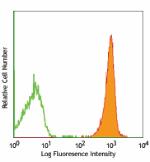
LOU rat splenocytes stained with OX-1 purified, followed by ... -
Biotin anti-rat CD45
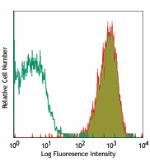
LOU rat splenocytes stained with biotinylated OX-1, followed... -
FITC anti-rat CD45
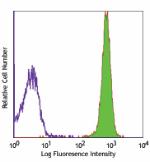
LOU rat splenocytes stained with OX-1 FITC -
PE anti-rat CD45
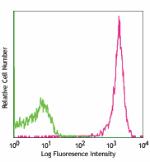
LOU rat splenocytes stained with OX-1 PE -
APC/Cyanine7 anti-rat CD45
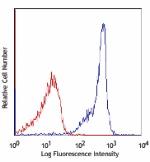
LOU rat splenocytes stained with OX-1 APC/Cyanine7 -
PE/Cyanine7 anti-rat CD45
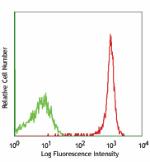
Lou rat splenocyte stained with OX-1 PE/Cyanine7 -
PerCP/Cyanine5.5 anti-rat CD45
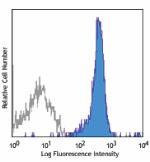
LOU rat splenocytes were stained with rat CD45 (clone OX-1) ... -
Alexa Fluor® 488 anti-rat CD45
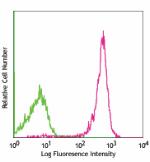
LOU rat splenocytes stained with OX-1 Alexa Fluor® 488 -
Alexa Fluor® 647 anti-rat CD45
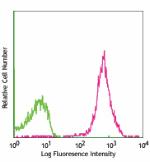
LOU rat splenocytes stained with OX-1 Alexa Fluor® 647 -
Alexa Fluor® 700 anti-rat CD45
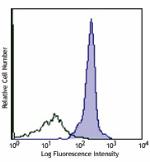
LOU rat splenocytes were stained with CD45 (clone OX-1) Alex... -
APC/Fire™ 750 anti-rat CD45
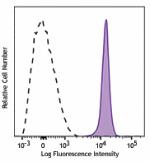
LOU rat splenocytes were stained with CD45 (clone OX-1) APC/... -
Pacific Blue™ anti-rat CD45
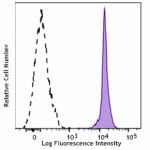
LOU rat splenocytes were stained with CD45 (clone OX-1) Paci... -
PE/Dazzle™ 594 anti-rat CD45
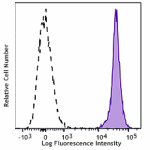
LOU rat splenocytes were stained with CD45 (clone OX-1) PE/... -
Spark Blue™ 550 anti-rat CD45 (Flexi-Fluor™)
-
Spark Blue™ 574 anti-rat CD45 (Flexi-Fluor™) Antibody
-
Spark Red™ 718 anti-rat CD45 (Flexi-Fluor™)
 Login / Register
Login / Register 













Follow Us